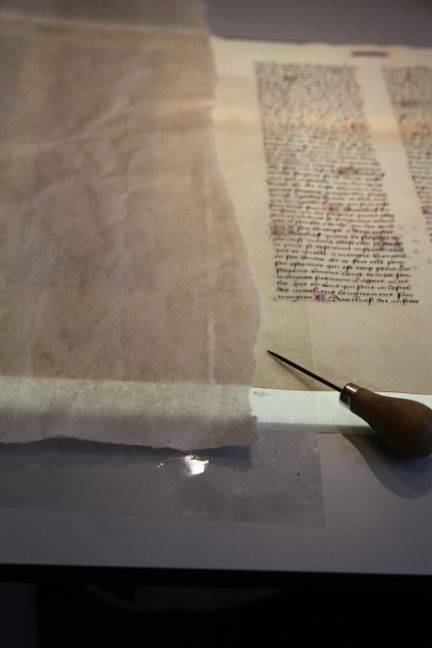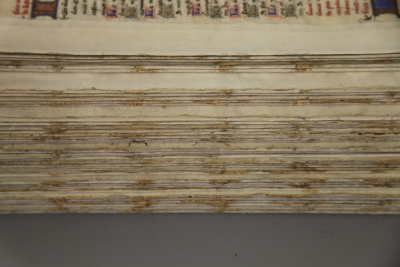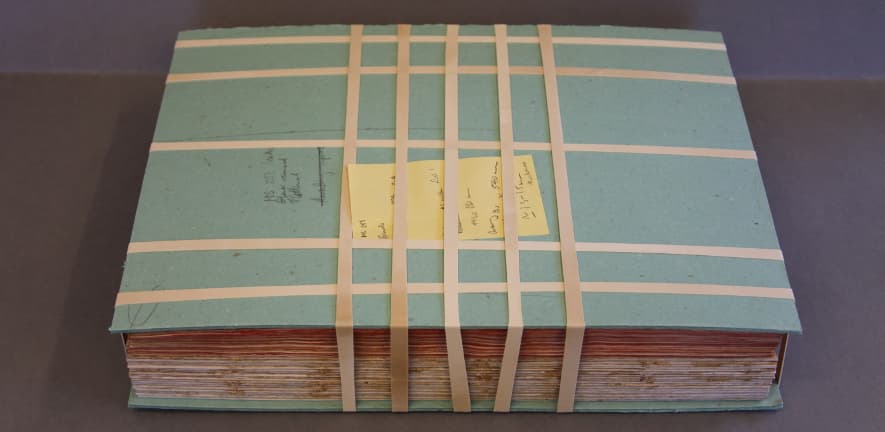Flattening
The process of shaping the spine with a hammer to make 90-degree backing shoulders for the boards had left the spine-folds of the quires badly distorted.
More damage inflicted with a hammer: in this case, the distortion has led to tight hard pleats forming in the spine-fold.
Before repairs could be carried out to the torn sewing holes this distortion had to be removed by gentle humidification with narrow strips of damp blotting paper, protected from direct contact with the parchment by a non-woven polyester barrier layer. This system allows water vapour to soften the parchment slightly until it can be reshaped around folds of dry blotter to dry flat. The same technique was used to remove pleats in leaves.

Diagram showing the method of drying humidified bifolia in a folded format.

‘Suction pleats’ can form in leaves when the book is closed carelessly and the leaves become creased.
Repair
Japanese handmade paper, toned to blend with the colour of the original parchment, was chosen as the best material with which to repair the tears and enlarged sewing holes in the spine folds. The parchment along the folds of the outer bifolia of each quire had become partially gelatinised by the heat and moisture of the hide glue applied in the eighteenth century, leaving the membranes brittle in localised areas. Japanese paper repair patches were strong enough to hold these damaged edges together and moulded more easily to the contours of the parchment in small patches than patches of new parchment.
The repair patches were traced out on the Japanese paper using a metal point to give a soft torn edge and adhered with purified wheat-starch paste. Patches were applied to both sides of the damaged area and rubbed down thoroughly to ensure a good bond before being dried around folds of blotter once again.

A lightbox allows the repair patch to be traced out with great accuracy in the Japanese handmade paper using a metal point.

The repair patches have soft edges which blend well with the original parchment.

Detail of the spine folds following repair of the entire manuscript.
Reassembling

Following the completion of the repairs to the leaves, the quires of the manuscript were reassembled, working from the centre bifolium out to ensure accurate alignment. The quires were then stacked between boards kept under controlled pressure with elastic bands and left to settle for two months before sewing took place.





